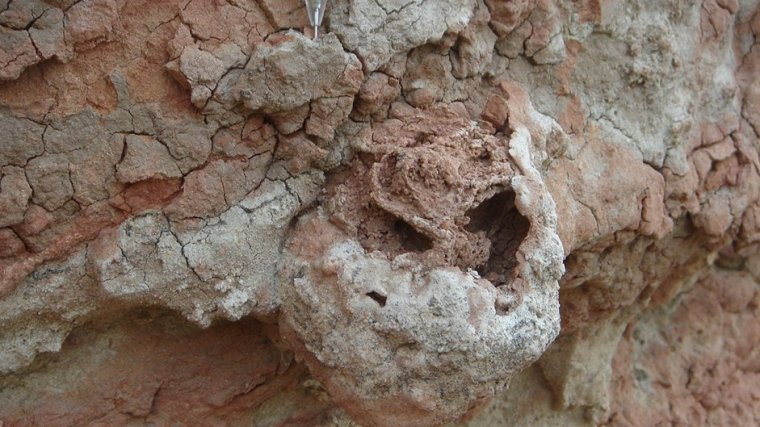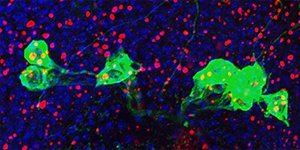| News / Science News |
Researchers discover oldest evidence of 'farming' by insects
NSF | AUGUST 21, 2016
Scientists from James Cook University and Ohio University discovered the oldest known examples of "fungus gardens" in 25 million-year-old fossil termite nests in East Africa.

A 25 million-year-old termite nest with the remains of a "fungus garden" preserved inside. ![]()
Some termite species cultivate fungi in "gardens" in subterranean nests or chambers, helping to convert plant material into a more easily digestible termite food source.
Scientists had previously used DNA from modern termites to estimate that termite fungus farming began 25 to 30 million years ago.
The fossil evidence from Tanzania confirmed that date, allowing researchers to more accurately characterize the timing and evolution of the symbiotic relationship between termites and fungi. The relationship likely significantly modified the environment, scientists say.
The transition to fungus agriculture increased the range of possible habitats for both the fungus-growing termites and their domesticated fungi. It's a process similar to what happened tens of millions of years later with humans and domesticated crops and livestock.
This study emphasizes the need for integrating perspectives from the fossil record with modern approaches in comparative biology -- it's a holistic approach to evolutionary biology and increases our understanding of environmental change in 'deep time.
The African rain forest may have served as the cradle of termite agriculture. The transition to fungiculture helped termites disperse to less hospitable dry savannas, and eventually to migrate out of Africa and into Asia.
YOU MAY ALSO LIKE



